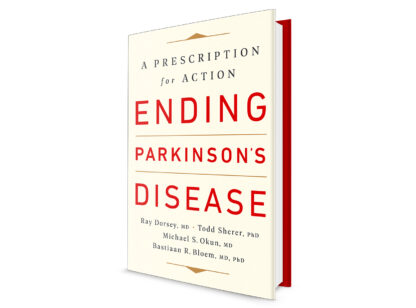While Alzheimer’s is the leading form of dementia, cognitive impairments in Parkinson’s disease dementia (PDD), combined with the movement symptoms of the disease, produce a greater impact on social and occupational functioning. Whether you are newly diagnosed with Parkinson’s, have lived with the condition for a while, or are a caregiver, educating yourself about the disease can help to manage the symptoms.
Incidence of Parkinson’s and PDD. Parkinson’s disease (PD) is a fairly common neurological disorder in older adults, estimated to affect nearly two percent of those over age 65. According to the National Parkinson’s Foundation, one million Americans are living with PD and 60,000 new cases will be diagnosed this year alone. Age is the biggest risk factor for developing the disease and nearly 50 percent more males are affected than females.
PD symptoms usually start out mild and progressively get much worse. The first signs are often so subtle that many people don’t immediately seek medical attention. While PD presents differently in each patient, common symptoms include tremors that affect the face, jaw, legs, arms and hands, slow, stiff walking and balance issues. Eventually, the symptoms worsen and can include: mood changes such as depression, problems with urination, trouble chewing and swallowing, memory loss and hallucinations. Recent studies following people with Parkinson’s over the entire course of their illness estimate that 50 to 80 percent of those with the disease may experience dementia, which includes Lewy body dementia.
The Weill Institute for Neurosciences estimates the average time from onset of movement problems in PD to developing PDD is approximately 10 years. The most common symptoms of PDD include: increased mood swings, confusion, delusions, paranoia, inability to concentrate, inability to apply reasoning and judgment, increased anxiety and sleep disturbances.
As PDD progresses, there are several steps caregivers can take to manage their loved one’s disorientation, confusion and impulsivity. These steps include:
Patience and calm. It is not usually helpful to try to reason or argue with someone experiencing a hallucination or delusion. Stay calm and be patient. If your loved one is frightened by the hallucination or delusion, try to redirect their attention to something else. You may find acknowledging what the person is seeing, even if you do not see it, can help reduce stress.
Slow directive. Speak slowly and at eye level; use simple sentences. Ask one question at a time and wait for an answer.
Consider causes. Is your loved one’s disruptive behavior due to hunger, thirst, fatigue, pain, loneliness or maybe boredom?
No single drug or treatment can cure PDD. Currently, physicians focus on a treatment plan that helps relieve the symptoms of the disease including lifestyle changes: regular exercise, quality sleep, stress management and attention to heart health and medications. In addition, participating in a support group can help reduce feelings of loneliness and isolation. Talking openly and honestly with other individuals who are experiencing similar issues, as well as to health care professionals, can help to improve your skills in coping with the challenges you are facing.
Patricia Riley is a board member of Alzheimers Coachella Valley, a community resource for dementia support and education which offers programs for PDD. For more information, call (760) 776.3100 or visit www.cvalzheimers.org.











































Comments (0)